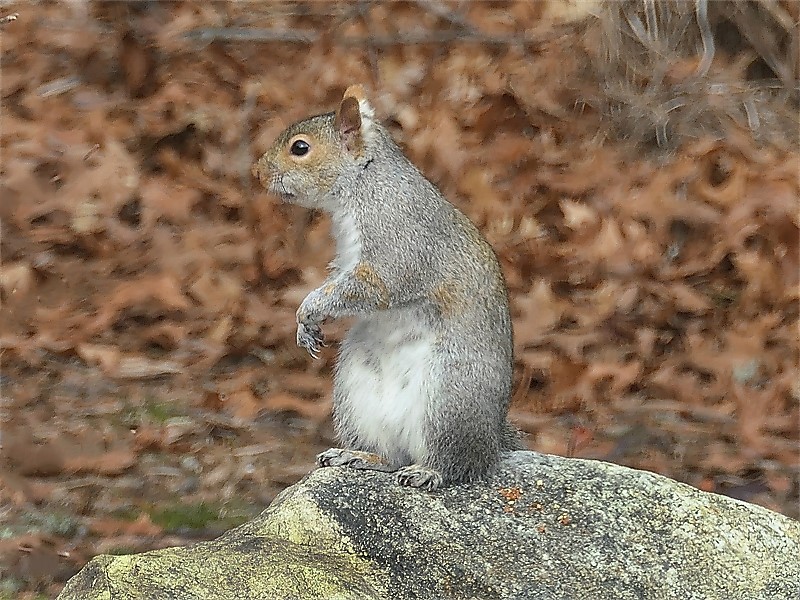This squirrel was so cute as he scurried about on the rock in our yard while posing for us each time he stopped. (Click on blog link for other photo.)

Cute little guy, don’t you think?
I heard a little rustle in the leaves as we were walking along the boardwalk on the Red Maple Swamp Trail. It didn’t sound like an animal as the sound was too consistent. I thought perhaps it was a snake. (Click on blog link for other photos.)
I had never seen a Garter Snake before so it was pretty cool when we spotted it among the leaves and dead branches on the side of the trail. “Garter snakes are indigenous to North America and found widely across the continent. Most common garter snakes have a pattern of yellow stripes on a black, brown or green background, and their average total length is about 22 inches.”
Have you ever seen a Garter Snake?
The Beech Forest Trail in Provincetown is so diverse. You never know what birds or animals or wildflowers you might see as you hike on the trail over the boardwalks or up the steps. (Click on blog link for other photos.)
It’s always been one of my favorite hikes… no matter what time of the year.
Have you ever hiked the Beech Forest Trail?
We all should be so thankful to IFAW, the International Fund for Animal Welfare, for their work around the globe to rescue and rehabilitate wildlife. (Click on blog link for other photos.)
I took a walk to the beach yesterday when I saw a car in the parking lot that had an IFAW sign in its window, so I knew something was going on. As I walked down the beach, I saw 2 white signs on the beach a good distance apart. There was also a volunteer from IFAW who was guarding the Harp Seal who was resting up on the beach. It is recommended that people stay at least 100 feet away from these endangered seals.
We had an interesting discussion while he described the number of seals that IFAW has rescued in the past few days on the Cape, which was quite a few.
The Harp Seal lives in the cold waters of the North Atlantic and Arctic Oceans. They will “ungulate” their bodies to produce forward movement so they can move up onto the beach to rest. They will head back to the water at a later high tide. Interesting fact: The Harp Seals get their name from the black spot on their back that looks like a harp.
I sure was at the beach at the perfect time. What a great experience! Have you ever seen a Harp Seal?